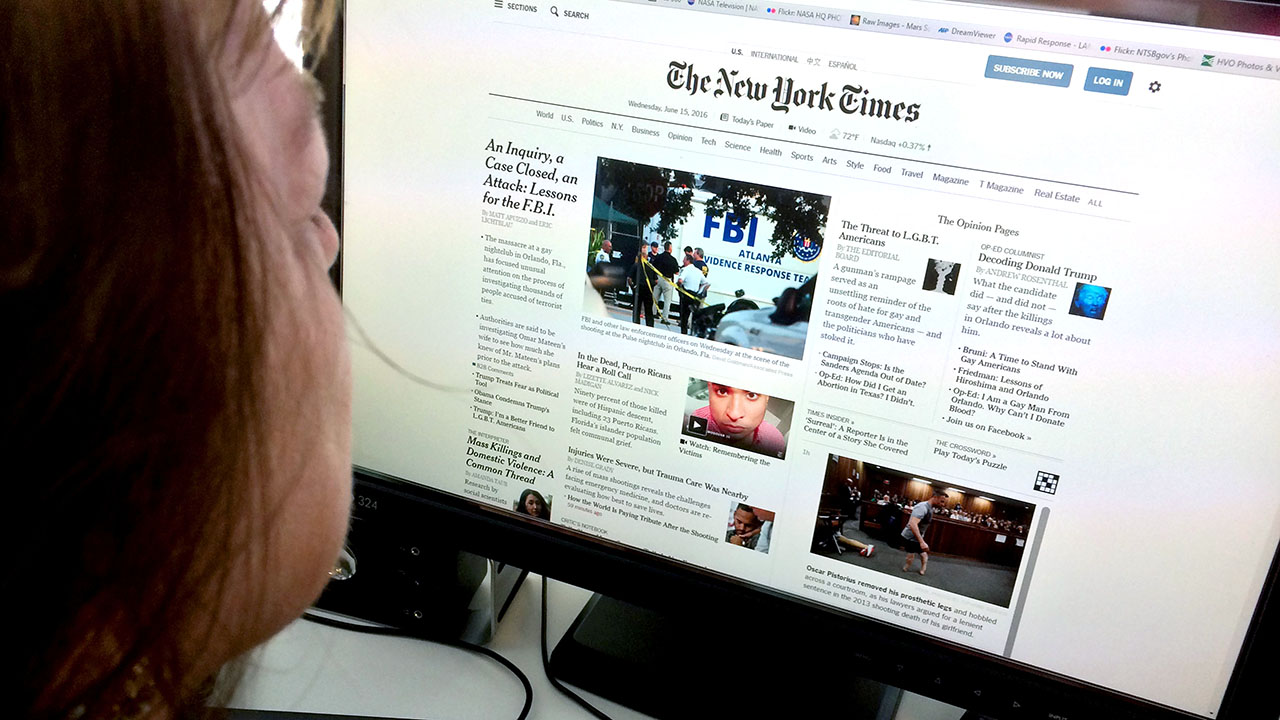DW News Giving Insightful Protection on Global Events
The Development of Journalism in the Age of Information Online
In the swiftly transforming landscape of journalism, the digital age has ushered in a brand-new period where the immediacy of online news improves both its development and intake. The increase of citizen journalists and independent voices better complicates the story, adding to a vivid yet perilous media environment.

Increase of Digital Information Platforms
The rise of electronic information platforms has basically changed the landscape of journalism, noting a shift from conventional print media to vibrant, on the internet rooms. This evolution was driven by innovations in modern technology and the increasing access of the net, which enabled information to be disseminated quickly and extensively. Unlike their print counterparts, digital systems can instantly upgrade content, supplying real-time news protection and evaluation that interest the modern reader's need for immediacy and importance.
Digital platforms have also expanded the extent of journalism, allowing a diversification of viewpoints and voices. With reduced obstacles to entrance, independent reporters and smaller sized wire service can get to global target markets, testing the monopoly as soon as held by developed media empires. This democratization of news has enriched the general public discussion, offering differed stories and catering to particular niche rate of interests that were formerly underserved.
Moreover, the assimilation of multimedia components such as video clip, audio, and interactive graphics enhances narration, making information much more engaging and obtainable (dw news). This multimedia come close to not just brings in a broader target market however also aids in the comprehension of intricate stories. In significance, electronic platforms have actually redefined journalism, cultivating innovation and versatility in an ever-evolving media environment

Influence of Social Media
Social network platforms have actually better revolutionized journalism by modifying how information is consumed and shared. These systems have actually equalized news circulation, enabling any individual with web access to report events in real-time. This immediacy has placed typical information outlets in a race to maintain, engaging them to take on much faster reporting techniques. Furthermore, social media sites has actually expanded audiences, granting journalists accessibility to worldwide viewership beyond geographical restraints.

The interactive nature of social networks fosters interaction, permitting audiences to take part in discussions, share viewpoints, and add to information narratives. This interaction enhances the dynamic in between journalists and their audiences, promoting an extra participatory kind of journalism. However, this additionally places tremendous stress on reporters to create material that reverberates with audiences, typically prioritizing sensationalism to record focus.
In addition, social networks systems have ended up being crucial tools for journalists to source stories, gauge popular opinion, and connect with industry peers. By keeping track of trending topics and user-generated material, journalists can reveal stories that could otherwise be neglected. Yet, the reliance on social media likewise requires an important analysis of resources to make certain the credibility of information shared. In this evolving landscape, flexibility stays crucial for reporters to flourish.
Difficulties of Misinformation
In the middle of the electronic revolution of journalism, one significant obstacle is the prevalent spread of false information. In an age where details is quickly available and bountiful, differentiating in between reputable information and produced content has ended up being significantly hard. The large volume of details disseminated across numerous on-line platforms typically blurs the line between fact and fiction, posturing a significant hazard to the integrity of journalism.
False information can spread out rapidly with social media sites, where algorithms prioritize involvement over precision, unintentionally magnifying false stories (dw news). This not just threatens public rely on media institutions but also cultivates a setting where deceptive web content can affect popular opinion and decision-making procedures. The obstacle for journalists is twofold: to disprove frauds successfully and to maintain extensive requirements of fact-checking and verification
Further complicating this problem is the visibility of deepfakes and sophisticated disinformation projects that leverage advanced technologies to produce misleading content indistinguishable from reputable coverage. As these modern technologies advance, so should the devices and approaches used by journalists to battle them. Attending to false information calls for collaboration in between media companies, modern technology companies, and policymakers to establish thorough strategies that guard the authenticity of details in the digital age.
Role of Citizen Reporters
Browsing the landscape of misinformation highlights the transformative impact of citizen reporters within the electronic world. As standard media outlets grapple with the sheer speed and quantity of news dissemination online, citizen journalists-- regular individuals equipped with smart devices and accessibility to social media-- are playing a progressively crucial function. These grassroots factors have actually become instrumental in covering occasions quickly, commonly giving real-time updates from the ground before mainstream media can react.
Resident reporters have democratized news reporting, amplifying voices that might or else stay unheard. By leveraging platforms like Twitter, Facebook, and Instagram, they use varied perspectives that challenge the narratives regularly pushed Visit Website by developed media.
However, resident journalism is reshaping the media landscape, compelling traditional electrical outlets to adjust by incorporating user-generated web content into their coverage. By promoting area interaction and motivating participatory journalism, these electronic writers add to a much more comprehensive and vibrant information environment. As resident journalists continue to advance, their duty in shaping public discussion stays a necessary element of modern journalism.

Future of Journalistic Honesty
The expansion of digital systems has actually equalized information dissemination, enabling a wider array of voices to contribute to the news landscape. This has also led to the spread of false information and the disintegration of count on in media.
The surge of synthetic knowledge and algorithm-driven content curation better complicates the landscape. While AI can enhance coverage by evaluating substantial datasets and determining trends, it additionally positions risks of bias and adjustment. Reporters should for that reason stay alert, guaranteeing that innovation works as a tool for fact rather than distortion.
Moreover, the monetary stress on standard media outlets necessitate cutting-edge organization models to maintain top quality journalism. Subscription-based designs, nonprofit funding, and collaborations with technology business are becoming possible options. Yet, they must be pursued without jeopardizing content freedom.
Ultimately, the future of journalistic stability relies on the commitment of media and reporters companies to copyright openness, accountability, and a steadfast commitment to reality, in the middle of a rapidly transforming electronic world.
Verdict
The advancement of journalism in the electronic age offers both chances and difficulties. The surge of digital news systems and social media has equalized info dissemination, equipping a varied array of voices, consisting of citizen journalists. However, these advancements necessitate cautious efforts to combat false information and support journalistic stability. The future of journalism rests on the capability to adapt ingenious organization models that sustain quality coverage while preserving the trustworthiness and trust necessary for informed public discourse.
The rise of electronic news platforms has actually basically changed the landscape of next journalism, noting a shift from traditional print media to vibrant, online rooms. With reduced obstacles to access, independent journalists and smaller sized news companies can get to global target markets, challenging the syndicate when held by developed media empires.Social media platforms have additionally revolutionized journalism by modifying just how information is taken in and shared. As standard media outlets grapple with the large speed and quantity of information dissemination online, citizen journalists-- average individuals armed with smartphones and accessibility to social media-- are playing an increasingly critical role. The surge of digital news systems and social media has equalized information dissemination, equipping a varied variety of voices, i thought about this consisting of citizen journalists.